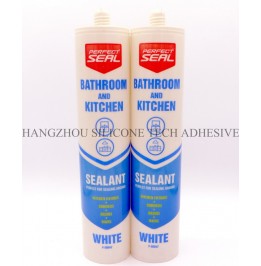Proper tool selection and maintenance are critical for achieving professional-grade sealant application, whether for bathroom renovations, window installations, or industrial projects. Using specialized tools designed for specific sealant types and tasks ensures consistent results, reduces waste, and extends the lifespan of both tools and materials. However, improper handling or cross-contamination can compromise performance, leading to adhesion failures, uneven finishes, or premature tool degradation.

Sealants vary widely in chemical composition, from silicone-based and polyurethane formulas to acrylic and hybrid variants. Using the same tool across multiple sealant types introduces residual chemicals that may react negatively. For example, silicone residue on a tool used for polyurethane sealants can inhibit curing, resulting in a sticky, non-durable finish. Assigning separate tools for each sealant category minimizes this risk.
Different sealants require distinct application techniques. Silicone sealants, for instance, demand smooth, continuous bead formation to prevent air bubbles, while polyurethane formulas may need thicker layers for structural integrity. Specialized tools, such as nozzle sizes tailored to viscosity or ergonomic designs for precision, help achieve these requirements. Reusing tools without cleaning or adjusting for sealant type leads to inconsistent results, such as uneven beads or wasted material.
Sealants contain solvents and additives that can corrode or degrade tools over time. For example, solvent-based sealants may dissolve plastic components in low-quality caulking guns, while abrasive fillers in heavy-duty sealants can wear down metal parts. Using tools made from materials resistant to specific sealant chemicals—such as stainless steel for polyurethane or silicone-friendly plastics—ensures durability and reduces replacement frequency.
Sealants cure rapidly, often within minutes to hours, making timely cleaning essential. Residual sealant left on tools hardens into a stubborn layer that’s difficult to remove later. Using solvents compatible with the sealant type—such as mineral spirits for oil-based products or water for latex-based formulas—helps dissolve residue without damaging tools. For reusable nozzles or cartridges, soaking them in solvent immediately after use prevents blockages.
Moisture trapped in tools during storage can lead to mold growth or corrosion, especially in humid environments. After cleaning, tools should be dried completely using lint-free cloths or air-drying racks. Avoid storing tools in damp basements or unventilated containers, as this accelerates degradation. For electric or battery-powered tools, ensure internal components are moisture-free before charging or storing.
Labeling tools by sealant type and storing them in dedicated compartments reduces the risk of accidental cross-contamination. For example, keeping silicone-specific caulking guns separate from polyurethane tools in labeled bins or toolboxes ensures operators grab the correct equipment every time. This practice also streamlines workflows, saving time during high-pressure projects.
Crew members must understand which tools correspond to which sealants to maintain specificity. Training sessions should cover material properties, cleaning protocols, and storage guidelines. For instance, demonstrating how to disassemble a caulking gun for thorough cleaning or identifying early signs of tool wear can prevent costly mistakes. Regular refresher courses reinforce these practices, especially when introducing new sealant formulations or tools.
Incorporating tool inspections into pre-application checklists ensures equipment is in optimal condition. Checks might include verifying nozzle sizes, testing trigger mechanisms for smooth operation, or confirming solvent compatibility. During application, supervisors should monitor for signs of improper tool use, such as uneven beads or excessive waste, and provide corrective feedback immediately.
Maintaining logs of tool assignments, cleaning schedules, and repair histories helps track performance trends and identify recurring issues. For example, if a particular caulking gun frequently clogs with a specific sealant type, the log may reveal a need for a different nozzle design or material. Digital tools like inventory management software can automate this process, linking tool data to project timelines for better resource allocation.
Maintaining tool specificity for sealant applications requires a combination of proper selection, rigorous cleaning, organized storage, and ongoing training. By treating tools as investments rather than disposable items, teams can achieve higher-quality finishes, reduce material costs, and minimize downtime caused by equipment failures. This approach not only enhances project outcomes but also fosters a culture of precision and accountability in construction and renovation workflows.
Copyright 2019 by Hangzhou Silicone Tech Adhesive Co., Ltd. All rights reserved.
Bathroom Sealant | Acrylic Sealant | Dow Corning 795 | Aquarium Sealant | Dow Corning 732 | Clear Silicone Sealant | Polysulfide Sealant | Glazing Sealant | Mirror Sealant | IG Sealant
Powered by Onepound